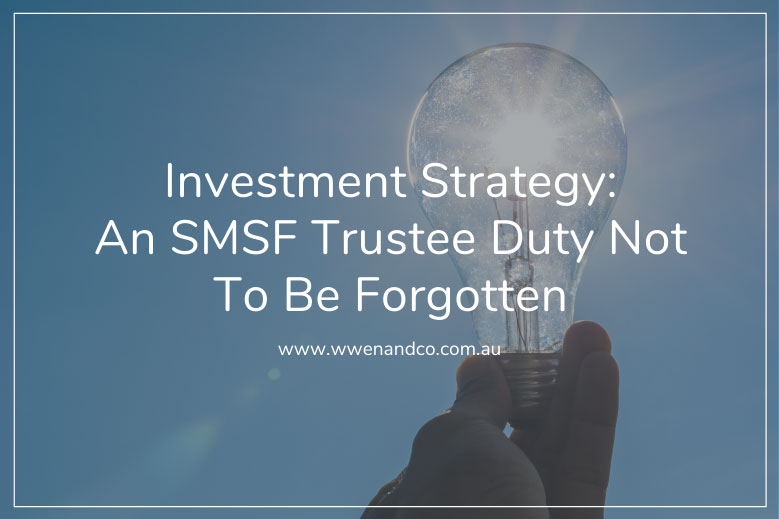
Preparing an investment strategy
The majority of people who set up their own SMSF say that “control” is a big reason for doing it. There is flexibility and benefits in running your own superannuation fund, but it is also a big responsibility to make sure your fund grows and provides for your retirement.
Preparing an “investment strategy” is one of the key tasks that SMSF trustees need to complete — and maintain. This involves formulating a strategy that takes into account risk, return and diversification. There is no master plan or prescribed format for preparing an investment strategy, and it will be largely determined by your own approach to investment and risk, and in fact, will be unique to your SMSF.
Your SMSF investment strategy needs to be regularly updated
Your investment strategy provides you and the other trustees with a framework for making investment decisions. It should be in writing so you can show your investment decisions comply with your fund’s trust deed and the super laws, and it will also be used during the annual audit and in making appropriate assessments. This is why your investment strategy will need to be regularly updated, especially as members get older and risk profiles change.
What to consider when preparing your investment strategy
When preparing your investment strategy, you need to consider:
- Diversification (investing in a range of assets and asset classes)
- The risk and likely return from investments, to maximise member returns
- The liquidity of fund assets (how easily they can be converted to cash)
- The fund’s ability to pay benefits when members retire
- Members’ needs and circumstances (for example, their age and retirement needs)
- Costs the fund incurs
Stick to the rules for SMSF investments
There are however legislated requirements and conditions for investing for your SMSF, such as not buying assets from, or lending to, fund members or other related parties (although there are some exceptions). Note also that the ATO’s definition of “non-arms length income” has recently tightened to include certain expenditure. The point, however, is that your strategy should show that you are sticking to the rules, but also the trust deed can also set out investment criteria.
One major rule is that the SMSF needs to meet the “sole purpose test” – this sole purpose being that the fund is established and managed solely to save for your retirement (or to your dependents in the event of your death). The financial arrangements entered into also need to reflect this purpose.
The Superannuation Industry (Supervision) Act 1993 (SISA) states that: The trustee of the entity must formulate and give effect to an investment strategy that has regard to all the circumstances of the entity, including in particular:
- The risk involved in making, holding and realising, and the likely return from, the entity’s investments, having regard to its objectives and expected cash flow requirements
- The composition of the entity’s investments as a whole, including the extent to which they are diverse or involve exposure of the entity to risks from inadequate diversification
- The liquidity of the entity’s investments, having regard to its expected cash flow requirements
- The ability of the entity to discharge its existing and prospective liabilities
The bottom line is that an SMSF’s trustees are responsible, and the “sole purpose test” needs to always be the primary focus.
The members’ investment objectives will be the starting point when devising a strategy. However, it is also worth remembering that as time goes by these objectives will change.
For example, if retirement is still some way off, a member’s objective is likely to be to accumulate money and assets, so growing capital may be a primary aim. Later, when retirement is looming or is already a reality, a steady income stream is more likely to be the primary objective.
Of course, a mixture of the two is also possible, as members may not be of a similar age.
Apart from a bias to growth or income investments, strategic decisions your fund will need to make include will it diversify asset allocation, or take a focused approach, and will your SMSF use other risk management tools for hedging purposes? These are the kind of questions to ask as part of setting your investment strategy.
Exposures to certain asset classes can be expressed as percentage ranges, and within each class, you can also outline the investment methods – for example with equities, use of direct holdings, managed funds or derivatives and so on.
As the investment strategy is a document against which trustees are held accountable, it should be signed and dated. The document should also be updated every time a change is deemed necessary in investment approach. Minutes showing decisions made, and members agreeing to these decisions, can also form part of the document.

